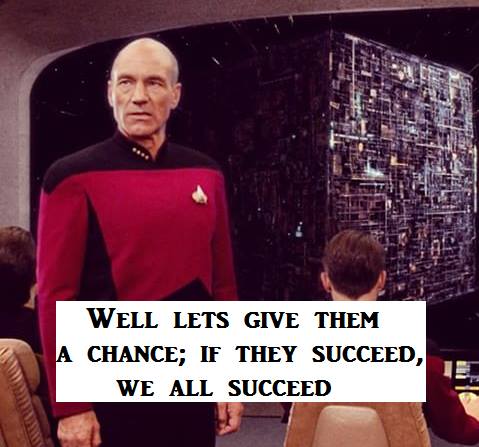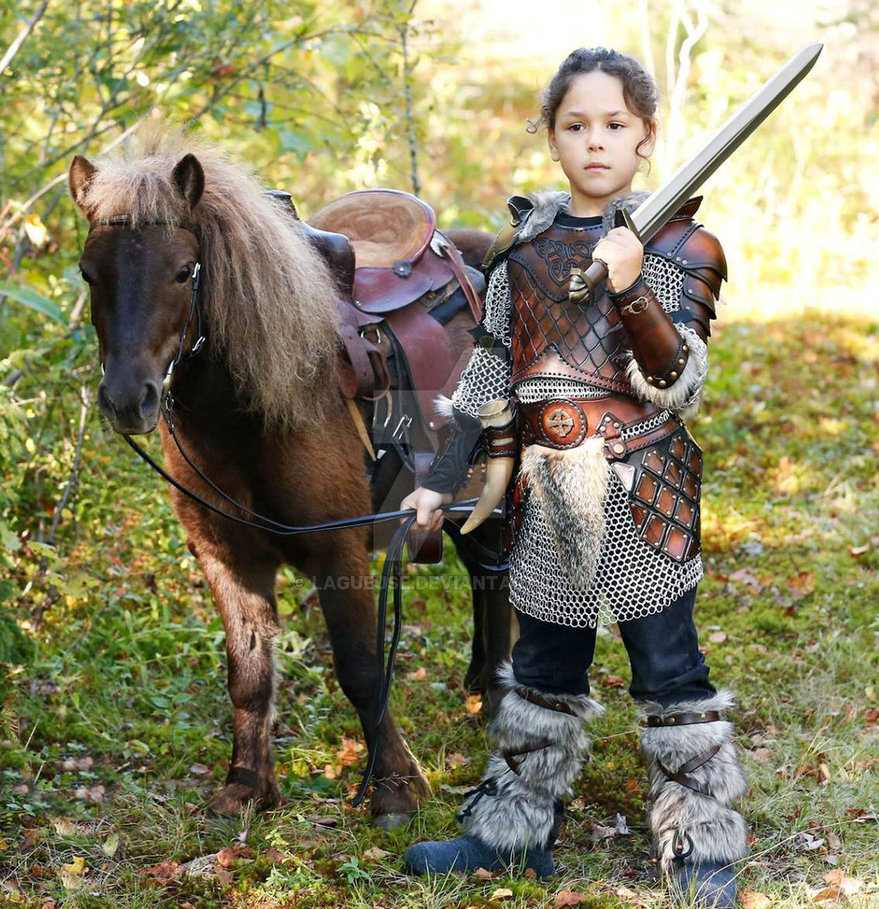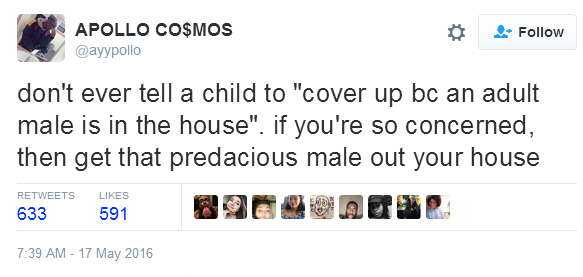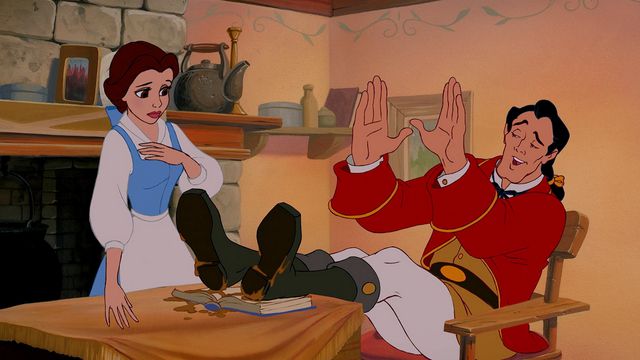
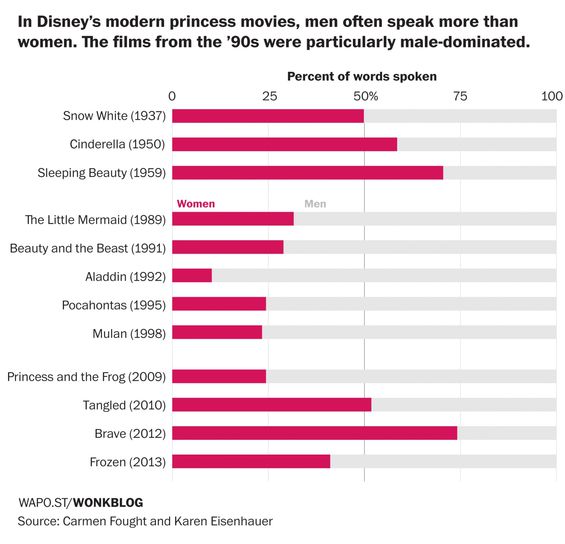
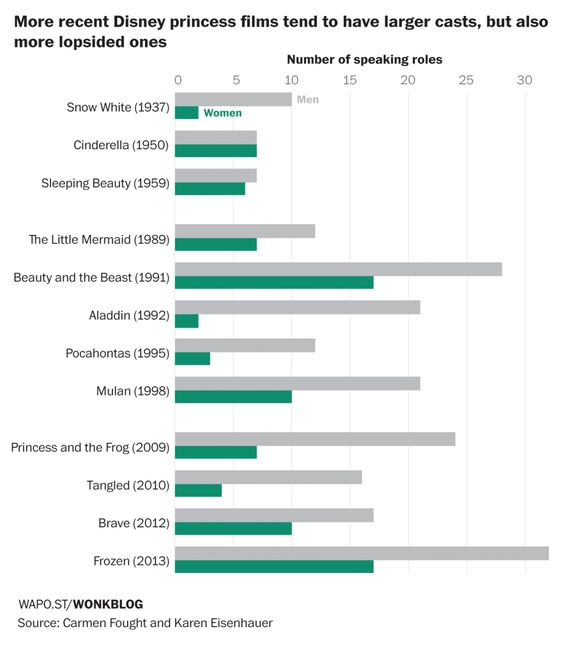
New study shows that Disney princesses don’t get to talk in their own movies
[Top image is from Beauty and the Beast, of Belle and Gaston. Gaston is talking and has his feet up on the table, directly on Belle’s book. Belle is looking at his muddy boots on her book, clearly unhappy.
Text below:
In Disney’s modern princess movies, men often speak more than women. The films from the ‘90s were particularly male-dominated.
Second image is of a chart comparing the percent of words spoken by women and men in Disney princess movies.
Snow White (1937)
Women: 50%
Men: 50%Cinderella (1950)
Women: 60%
Men: 40%Sleeping Beauty (1959)
Women: 71%
Men: 29%The Little Mermaid (1989)
Women: 32%
Men: 68%Beauty and the Beast (1991)
Women: 29%
Men: 71%Aladdin (1992)
Women: 10%
Men: 90%Pocahontas (1995)
Women: 24%
Men: 76%Mulan (1998)
Women: 23%
Men: 77%Princess and the Frog (2009)
Women: 24%
Men: 76%Tangled (2010)
Women: 52%
Men: 48%Brave (2012)
Women: 74%
Men: 26%Frozen (2013)
Women: 41%
Men: 59%Third image is a chart listing the number of speaking roles for men and women in the same movies (unlike chart 2, the figures may not be exact, as they are not directly listed within the article)
Snow White (1937)
Women: 2
Men: 10Cinderella (1950)
Women: 7
Men: 7Sleeping Beauty (1959)
Women: 6
Men: 7The Little Mermaid (1989)
Women: 7
Men: 12Beauty and the Beast (1991)
Women: 17
Men: 28Aladdin (1992)
Women: 2
Men: 21Pocahontas (1995)
Women: 3
Men: 12Mulan (1998)
Women: 10
Men: 21Princess and the Frog (2009)
Women: 7
Men: 24Tangled (2010)
Women: 4
Men: 16Brave (2012)
Women: 10
Men: 17Frozen (2013)
Women: 17
Men: 33Sources for both are Carmen Fought and Karen Eisenhauer]
Although they’ve been criticized for reinforcing conventional gender roles, Disney’s princess line is nevertheless the most high-profile female-led franchise of all time. And while Disney has gotten praise for creating more progressive princesses starting in the ’90s, a new study complicates the idea of Disney’s evolution: In almost every Disney princess film since 1989, the study finds, male characters get significantly more speaking time than female ones. The data comes from linguists Carmen Fought and Karen Eisenhauer, who previewed their ongoing study at recent conference. The Washington Post has a detailed breakdown of their findings.
Some of them don’t even get to be human in their own movies but you know
To be honest, my first reaction is to try and defend Disney princesses because they’ve many so much to me over the years, but there is rarely anything defensible.
Even in media about and for girls, male characters are treated as the default.
Literary dialect analysis and sociolinguistic analysis is so frickin important and here is why! This is the kind of research I live for and actually have contributed to on a somewhat professional level!
